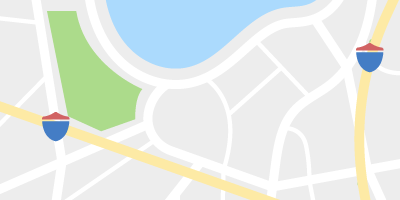Compared to other capital cities in the world, Delhi’s restaurant scene changes slowly. This is partly because eating in restaurants has only recently become a source of recreation for anyone outside the elite classes; even today, generations of working class residents rely on the city’s beloved street-vendors and old, family-run sweet and snack shops across the city’s vast, throttling expanse. Nevertheless, food is everywhere in Delhi — like in other Indian cities — including some unexpected places.
These days, Delhi’s powerhouse of Punjabi or Mughlai cuisine — the type of food best known in the West — is being challenged. Young people from India’s Northeast are making their names as some of the city’s best chefs, and the puritanism that once defined eating in India’s capital is giving way to creative impulses befitting this modern, growing metropolis. In addition to the vendors of the old city, where locals and tourists stream past stacks of rotis fresh from tandoors, cooks from every part of the country showcase the varied cuisines of their communities in small-scale, independent, and dynamic restaurants popular with the city’s younger generations.
It’s impossible in one list to completely summarize a city that defies linearity, but these 38 essential restaurants should get you started — but if a smell beckons from a side street or small storefront, abandon your plans and follow your instincts. You can also ask locals for tips and assistance, but don’t always expect a straight answer. In the historic parts of the city, like Old Delhi, simply following crowds will take you to great food.
In this latest refresh, we’ve revamped our write-ups to include even more relevant info for diners, including a rough range of pricing for each destination — ranging from $ for quick, inexpensive meals with dishes largely under $10 (or the equivalent in rupees), to $$$$ for places where entrees exceed $30.
New to the map in March 2025: Gulati, a popular Punjabi dhaba that nails the classics; Fujiya, an old-timey banquet style Punjabi Chinese restaurant in an upscale neighborhood; Delhi’s first Korean restaurant, Seoul, which just got a fresh facelift; Rude Chef, a casual and stylish restaurant from an accomplished chef serving interesting global cuisine; Nepalese momo specialist Lha Kitchen, which has become popular with influencer types; fashionable California-esque vegan food at Greenr Cafe; all-day nihari from Ballimaran Nahari; Nagaland’s Kitchen, a restaurant in an old Delhi marketplace that feels like a neighborhood bar; popular Nagaland cuisine from Dzukou Tribal Kitchen in far south Delhi; and Bhawan, a versatile canteen-inspired restaurant in Gurgaon.
A note on getting around: It’s a mistake to take a taxi into Old Delhi. Instead, use the metro, then walk or take a rickshaw the rest of the way. Use Uber to reach places in Delhi’s Central, East, South, and West districts.
Sharanya Deepak is a writer and editor from New Delhi, who has been covering Indian dining for Eater since 2019. She is also an editor at Vittles, and her work has appeared in Roads and Kingdoms, The Believer, and The Baffler, among others.
Read More
/cdn.vox-cdn.com/uploads/chorus_image/image/55804781/IMG_5612Graded.14.jpg)
/cdn.vox-cdn.com/uploads/chorus_image/image/73892896/10.4_KAS.0.jpg)
/cdn.vox-cdn.com/uploads/chorus_image/image/62870919/Sushi_Yuu_1.19.png)
/cdn.vox-cdn.com/uploads/chorus_image/image/65435137/chandi_chowk_cover.0.jpg)
:no_upscale()/cdn.vox-cdn.com/uploads/chorus_image/image/73967432/DELHI_MAJNUKATILA.0.jpg)
:no_upscale()/cdn.vox-cdn.com/uploads/chorus_image/image/73967433/DELHI_HAJINOORA1.0.jpg)
:no_upscale()/cdn.vox-cdn.com/uploads/chorus_image/image/73967434/DELHI_SNACKWALKDELHI_6.0.jpg)
:no_upscale()/cdn.vox-cdn.com/uploads/chorus_image/image/73967435/DELHI_ASHOKANDASHOK1.0.jpg)
:no_upscale()/cdn.vox-cdn.com/uploads/chorus_image/image/73967436/Jung_Bahadur_Kachori_Wala_FB.0.jpg)
:no_upscale()/cdn.vox-cdn.com/uploads/chorus_image/image/73967437/DELHI_SHYAMSWEETS1.0.jpg)
/cdn.vox-cdn.com/uploads/chorus_image/image/71003380/IMG_4682_photo.0.jpeg)
:no_upscale()/cdn.vox-cdn.com/uploads/chorus_image/image/73967438/DELHI_ALJAWAHAR.0.jpg)
:no_upscale()/cdn.vox-cdn.com/uploads/chorus_image/image/73967439/DELHI_PREMDIHATTI.0.jpg)
:no_upscale()/cdn.vox-cdn.com/uploads/chorus_image/image/73967440/DELHI_WENGERS.0.jpg)
:no_upscale()/cdn.vox-cdn.com/uploads/chorus_image/image/73967441/DELHI_BENGALISWEETS.0.jpg)
:no_upscale()/cdn.vox-cdn.com/uploads/chorus_image/image/73967442/triveni_gallery_5.0.jpg)
:no_upscale()/cdn.vox-cdn.com/uploads/chorus_image/image/73967443/DELHI_ANDHRABHAVAN.0.jpg)
:no_upscale()/cdn.vox-cdn.com/uploads/chorus_image/image/73967444/DELHI_CAFELOTA2.0.jpg)
:no_upscale()/cdn.vox-cdn.com/uploads/chorus_image/image/73967445/DAL_MAKHANI.0.jpg)
:no_upscale()/cdn.vox-cdn.com/uploads/chorus_image/image/73967446/196A0055.0.jpeg)
:no_upscale()/cdn.vox-cdn.com/uploads/chorus_image/image/73967447/DELHI_GHALIB.0.jpg)
:no_upscale()/cdn.vox-cdn.com/uploads/chorus_image/image/73967448/DELHI_INDIANACCENT.0.jpg)
/cdn.vox-cdn.com/uploads/chorus_image/image/55512231/march21_1073.447.jpg)
:no_upscale()/cdn.vox-cdn.com/uploads/chorus_image/image/73967449/DELHI_M.I.MEATSHOP.0.jpg)
:no_upscale()/cdn.vox-cdn.com/uploads/chorus_image/image/73967450/DELHI_KADIMI2.0.jpg)
:no_upscale()/cdn.vox-cdn.com/uploads/chorus_image/image/73967451/DELHI_MAZAAR.0.jpg)
:no_upscale()/cdn.vox-cdn.com/uploads/chorus_image/image/73967452/DELHI_NAGPAL.0.jpg)
:no_upscale()/cdn.vox-cdn.com/uploads/chorus_image/image/73967453/IMG_2545.0.jpg)
:no_upscale()/cdn.vox-cdn.com/uploads/chorus_image/image/73967454/Delhi_Rude_Chef.0.jpeg)
:no_upscale()/cdn.vox-cdn.com/uploads/chorus_image/image/73967455/DELHI_LITTLESAIGON3.0.jpeg)
/cdn.vox-cdn.com/uploads/chorus_image/image/69083879/IMG_5864.0.0.0.0.jpeg)
:no_upscale()/cdn.vox-cdn.com/uploads/chorus_image/image/73967456/Delhi_Nagalands_Kitchen.0.jpeg)
:no_upscale()/cdn.vox-cdn.com/uploads/chorus_image/image/73967457/DELHI_KAMLASWEETS.0.jpg)
:no_upscale()/cdn.vox-cdn.com/uploads/chorus_image/image/73967458/DELHI_CARNATICCAFE_1.0.jpg)
:no_upscale()/cdn.vox-cdn.com/uploads/chorus_image/image/73967459/DELHI_BLUETOKAI.0.jpg)
:no_upscale()/cdn.vox-cdn.com/uploads/chorus_image/image/73967460/sibang_website.0.jpeg)
:no_upscale()/cdn.vox-cdn.com/uploads/chorus_image/image/73967461/Copy_of_BEETROOT_AND_SWEET_POTATO_CHOPS.0.jpg)